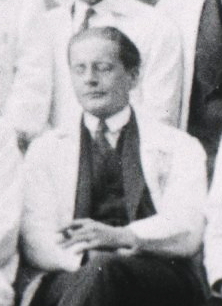Psychoanalysis is a set of theories and therapeutic techniques that deal in part with the unconscious mind, and which together form a method of treatment for mental disorders. The discipline was established in the early 1890s by Sigmund Freud, whose work stemmed partly from the clinical work of Josef Breuer and others. Freud developed and refined the theory and practice of psychoanalysis until his death in 1939. In an encyclopedic article, he identified the cornerstones of psychoanalysis as "the assumption that there are unconscious mental processes, the recognition of the theory of repression and resistance, the appreciation of the importance of sexuality and of the Oedipus complex." Freud's colleagues Alfred Adler and Carl Gustav Jung developed offshoots of psychoanalysis which they called individual psychology (Adler) and analytical psychology (Jung), although Freud himself wrote a number of criticisms of them and emphatically denied that they were forms of psychoanalysis. Psychoanalysis was later developed in different directions by neo-Freudian thinkers, such as Erich Fromm, Karen Horney, and Harry Stack Sullivan.

Sigmund Freud was an Austrian neurologist and the founder of psychoanalysis, a clinical method for evaluating and treating pathologies seen as originating from conflicts in the psyche, through dialogue between patient and psychoanalyst, and the distinctive theory of mind and human agency derived from it.
Transactional analysis is a psychoanalytic theory and method of therapy wherein social interactions are analyzed to determine the ego state of the communicator as a basis for understanding behavior. In transactional analysis, the communicator is taught to alter the ego state as a way to solve emotional problems. The method deviates from Freudian psychoanalysis, which focuses on increasing awareness of the contents of subconsciously held ideas. Eric Berne developed the concept and paradigm of transactional analysis in the late 1950s.

Eric Berne was a Canadian-born psychiatrist who created the theory of transactional analysis as a way of explaining human behavior.
In psychology, displacement is an unconscious defence mechanism whereby the mind substitutes either a new aim or a new object for things felt in their original form to be dangerous or unacceptable.
In psychoanalysis, cathexis is defined as the process of allocation of mental or emotional energy to a person, object, or idea.
Neo-Freudianism is a psychoanalytic approach derived from the influence of Sigmund Freud but extending his theories towards typically social or cultural aspects of psychoanalysis over the biological.
In classical Freudian psychoanalytic theory, the death drive is the drive toward death and destruction, often expressed through behaviors such as aggression, repetition compulsion, and self-destructiveness. It was originally proposed by Sabina Spielrein in her paper "Destruction as the Cause of Coming Into Being" in 1912, which was then taken up by Sigmund Freud in 1920 in Beyond the Pleasure Principle. This concept has been translated as "opposition between the ego or death instincts and the sexual or life instincts". In Beyond thePleasure Principle, Freud used the plural "death drives" (Todestriebe) much more frequently than the singular.

Heinz Hartmann, was a psychiatrist and psychoanalyst. He is considered one of the founders and principal representatives of ego psychology.

Abraham Arden Brill was an Austrian Empire-born psychiatrist who spent almost his entire adult life in the United States. He was the first psychoanalyst to practice in the United States and the first translator of Sigmund Freud into English.
In Freudian psychology and psychoanalysis, the reality principle is the ability of the mind to assess the reality of the external world, and to act upon it accordingly, as opposed to acting according to the pleasure principle. The reality principle is the governing principle of the actions taken by the ego, after its slow development from a "pleasure-ego" into a "reality-ego".

In Freudian psychoanalysis, the ego ideal is the inner image of oneself as one wants to become. It consists of "the individual's conscious and unconscious images of what he would like to be, patterned after certain people whom ... he regards as ideal."
Paul Ferdinand Schilder was an Austrian psychiatrist, psychoanalyst, and medical researcher.
Paul Federn was an Austrian-American psychologist who was a native of Vienna. Federn is largely remembered for his theories involving ego psychology and therapeutic treatment of psychosis.
Hans Loewald (1906–1993) was a German-American psychoanalyst and theorist. While apparently a traditional Freudian, Loewald in his thinking was both elegant and quietly revisionist - a radical conservatist.
Psychoanalytic sociology is the research field that analyzes society using the same methods that psychoanalysis applies to analyze an individual.

Introduction to Psychoanalysis or Introductory Lectures on Psycho-Analysis is a set of lectures given by Sigmund Freud, the founder of psychoanalysis, in 1915–1917. The 28 lectures offer an elementary stock-taking of his views of the unconscious, dreams, and the theory of neuroses at the time of writing, as well as offering some new technical material to the more advanced reader.
Charles Brenner was an American psychoanalyst who served as president of the New York Psychoanalytic Society, and is perhaps best known for his contributions to drive theory, the structure of the mind, and conflict theory.
Neutrality is an essential part of the analyst's attitude during treatment, developed as part of the non-directive, evenly suspended listening which Freud used to complement the patient's free association in the talking cure.
Censorship (psychoanalysis) (Zensur) is the force identified by Sigmund Freud as operating to separate consciousness from the unconscious mind.





